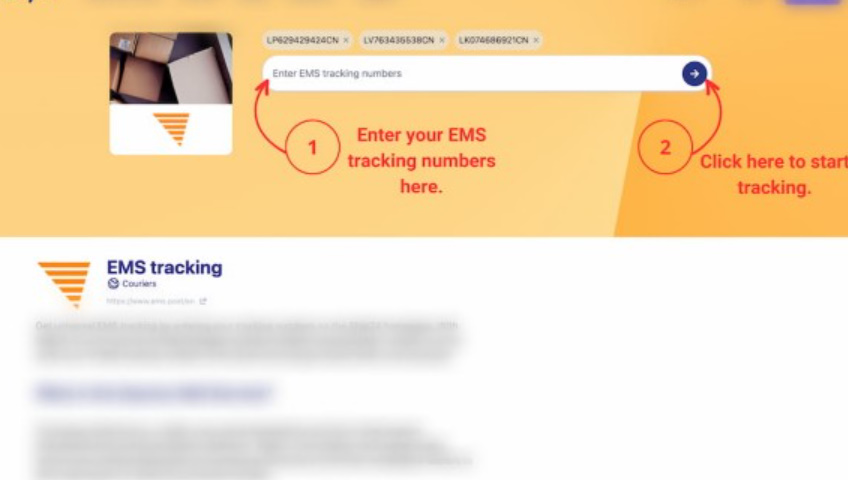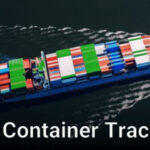Tracking postal and Express Mail Service (EMS) shipments has become an integral part of the shipping process, providing peace of mind to senders and receivers alike. Whether you’re sending a package across the country or awaiting a delivery from overseas, the ability to track your shipment ensures transparency, security, and efficiency. This comprehensive guide explores the ins and outs of Post/EMS tracking, covering everything from the basics to advanced tracking technologies.
1. Introduction to Post/EMS Tracking
Post/EMS tracking is a vital service offered by postal and courier companies worldwide, allowing customers to monitor the progress of their shipments from origin to destination. The tracking process provides real-time updates, ensuring that senders and recipients are informed about the status of their packages at every stage.
Tracking information typically includes details such as when the package was sent, its current location, and an estimated delivery date. This service is particularly important for valuable or time-sensitive shipments, as it provides a level of accountability and reassurance that the package is on its way.
2. Understanding EMS (Express Mail Service)
What is EMS?
EMS is an international express postal service offered by postal operators worldwide, delivering documents and merchandise swiftly and securely. Unlike standard postal services, EMS is designed to offer faster delivery times and enhanced tracking capabilities.
History and Development of EMS
EMS was introduced by the Universal Postal Union (UPU) in 1985 as a way to provide fast, reliable, and cost-effective express delivery services on a global scale. Since then, it has grown to encompass over 170 countries, making it one of the most widely used international express services.
Global Reach of EMS
EMS operates in almost every country, with each national postal operator providing EMS services. The EMS Cooperative, a part of the UPU, coordinates the international exchange of EMS items, ensuring consistent service standards and tracking across borders.
3. Overview of Postal Tracking
Postal Services and Their Evolution
Postal services have evolved significantly from the days of hand-delivered letters to modern logistics networks capable of handling millions of packages daily. This evolution has brought about the need for tracking systems to manage the vast volume of mail and parcels.
Why Tracking is Essential for Postal Services
In today’s fast-paced world, customers expect transparency and reliability from postal services. Tracking meets these demands by providing up-to-date information on the status of shipments, helping to build trust and satisfaction among users.
How Tracking Improves Customer Satisfaction
Tracking not only reassures customers that their packages are on the way but also provides them with the ability to plan accordingly, whether they’re receiving or sending items. This increased transparency is a key factor in customer loyalty.
4. How Post/EMS Tracking Works
The Technology Behind Post/EMS Tracking
Post/EMS tracking relies on a combination of barcodes, GPS, and digital databases to provide real-time information. Each package is assigned a unique tracking number, which is scanned at various checkpoints along its journey.
Steps in the Tracking Process
The tracking process typically begins when a package is dropped off at a postal facility. From there, it’s scanned at various points – such as when it’s processed, when it departs or arrives at sorting centers, and when it’s out for delivery. These scans update the tracking information, which can be accessed online.
How Packages Are Tracked from Origin to Destination
As a package moves through the postal network, its tracking number is used to record its progress. This data is uploaded to a central system, where customers can check the status of their shipments at any time. The process continues until the package is delivered.
5. Types of Postal/EMS Tracking
Real-Time Tracking
Real-time tracking provides instant updates as a package moves through the postal network. This type of tracking is especially useful for time-sensitive shipments, as it allows senders and recipients to monitor the exact location of a package at any given moment.
Standard Tracking
Standard tracking offers periodic updates, typically when a package reaches major checkpoints like sorting centers or when it goes out for delivery. While not as immediate as real-time tracking, it still provides a reliable way to keep tabs on a shipment.
Advanced Tracking Options
Some postal services offer advanced tracking options, such as notifications via SMS or email, delivery scheduling, and more detailed tracking data. These services are often available for an additional fee and provide even greater control over the delivery process.
6. Key Components of Tracking Systems
Barcodes and QR Codes
Barcodes and QR codes are fundamental to the tracking process. Each package is assigned a unique code that is scanned at various stages, updating its status in the system. QR codes are increasingly used for their ability to store more information than traditional barcodes.
GPS and Location-Based Services
GPS technology is used in some tracking systems to provide real-time location data. This is particularly useful for high-value or urgent deliveries, where precise tracking is essential.
Integration with Digital Platforms
Many postal services have integrated their tracking systems with digital platforms, allowing customers to track packages via mobile apps, websites, and even smart home devices. This integration enhances accessibility and convenience.
7. Tracking Services Across Different Countries
Differences in Tracking Services by Country
Tracking services can vary significantly depending on the country. While some nations offer detailed, real-time tracking, others may provide only basic updates. Understanding these differences is crucial when sending or receiving international packages.
How to Track International Packages
Tracking international shipments typically involves using the tracking number provided by the postal service in the country of origin. This number can often be used on the destination country’s postal service website to continue tracking the package.
The Role of Customs in Tracking
Customs can be a significant factor in the tracking process, especially for international shipments. Packages may be delayed or held at customs, and tracking updates may reflect these delays. Understanding the customs process can help mitigate concerns about delayed shipments.
8. Benefits of Using Post/EMS Tracking
Enhanced Security for Shipments
Tracking provides an added layer of security, as each movement of the package is documented and can be traced. This reduces the likelihood of loss or theft and increases accountability.
Improved Customer Experience
Knowing where a package is at all times improves the overall customer experience. Whether it’s a business sending products to customers or individuals sending gifts, tracking ensures that everyone involved is informed and reassured.
Reducing Lost or Delayed Packages
Tracking systems help reduce the occurrence of lost or delayed packages by providing real-time data. If a package is delayed or goes off-route, it can be quickly identified and rectified.
9. Common Challenges in Tracking
Delays in Tracking Updates
One of the most common challenges is delays in tracking updates, which can occur due to technical issues, delays in scanning, or bottlenecks in the delivery process. Understanding these potential issues can help manage expectations.
Issues with International Tracking
International tracking can be complicated due to differences in tracking systems, customs procedures, and postal regulations. Delays or gaps in tracking information are common when a package moves between different countries’ postal systems.
Problems with Tracking Number Accuracy
Occasionally, issues with the accuracy of tracking numbers can arise. This might be due to data entry errors, technical glitches, or issues with barcode scanning. Customers encountering this problem should contact their postal service for assistance.
10. Tips for Effective Tracking
How to Track Your Package Efficiently
To track a package efficiently, it’s important to use the correct tracking number and enter it on the appropriate postal service website. Keeping the tracking number handy and checking for updates regularly can help avoid unnecessary delays or confusion.
What to Do If Tracking Information Is Unclear
If tracking information is unclear or doesn’t update for an extended period, it’s advisable to contact the postal service or courier for clarification. They can provide additional details or investigate any issues with the shipment.
Contacting Customer Service for Tracking Issues
Customer service can be a valuable resource if you’re experiencing problems with tracking. Most postal services offer multiple ways to get in touch, including phone, email, and live chat.
11. Comparing Post/EMS Tracking with Other Services
Differences Between Post/EMS and Private Courier Services
While both Post/EMS and private courier services offer tracking, there are key differences in terms of speed, cost, and the level of detail provided in tracking updates. Private couriers often offer more advanced features but at a higher price.
Advantages of Post/EMS Tracking Over Others
One of the main advantages of Post/EMS tracking is its affordability and extensive global reach. Unlike private couriers, EMS is available in almost every country, making it a reliable choice for international shipments.
Cost Comparisons
When comparing Post/EMS tracking to other services, it’s important to consider both the cost of shipping and the level of tracking provided. EMS often offers a good balance of cost and service, particularly for international deliveries.
12. Innovations in Post/EMS Tracking
Use of AI and Machine Learning in Tracking
Artificial intelligence (AI) and machine learning are increasingly being used to improve tracking accuracy and predict delivery times. These technologies analyze data from past shipments to provide more reliable tracking information.
Blockchain Technology in Postal Tracking
Blockchain technology is being explored as a way to enhance the security and transparency of tracking systems. By creating a tamper-proof record of each step in the shipping process, blockchain could revolutionize how packages are tracked.
Future Trends in Tracking
The future of tracking is likely to include more real-time data, better integration with digital platforms, and the use of emerging technologies like drones and autonomous vehicles to improve delivery efficiency.
13. FAQs About Post/EMS Tracking
- What is the difference between Post and EMS tracking?
Post tracking generally refers to standard postal services, while EMS is a faster, express service with more detailed tracking. - How long does it take for tracking to update?
Tracking updates can vary, but they typically occur when the package reaches key checkpoints. Delays in updates can happen due to various factors. - Can I track international packages with Post/EMS?
Yes, most international packages can be tracked using Post/EMS, though the level of detail may vary depending on the destination country. - What should I do if my tracking number doesn’t work?
If your tracking number isn’t working, double-check the number for accuracy and try again. If it still doesn’t work, contact customer service for assistance. - Is there a way to get faster tracking updates?
Some postal services offer premium tracking options that provide more frequent updates or notifications. These may be available for an additional fee. - What happens if my package is lost?
If a package is lost, you should contact the postal service immediately to file a claim. Tracking information can be crucial in locating the package or processing a compensation claim.
14. Troubleshooting Post/EMS Tracking Issues
What to Do When Tracking Information Is Not Updating
If tracking information isn’t updating, there could be several reasons, such as delays in scanning or technical issues. Patience is key, but if the delay is prolonged, contacting customer service can help resolve the issue.
How to Handle Lost Packages
In the unfortunate event of a lost package, it’s important to file a claim with the postal service as soon as possible. Providing the tracking number and any relevant details will help expedite the process.
Dealing with Customs Delays
Customs can often cause delays in the delivery of international packages. Tracking systems typically indicate when a package is being held at customs, and it may require additional documentation or duties to be cleared.
15. Conclusion
Recap of the Importance of Post/EMS Tracking
Post/EMS tracking is a critical tool for ensuring the safe and timely delivery of packages worldwide. It provides transparency, security, and peace of mind, making it an essential feature of modern postal services.
Future Outlook for Tracking Services
As technology continues to evolve, tracking systems are likely to become even more sophisticated, offering real-time data, predictive analytics, and seamless integration with digital platforms.
Final Thoughts on Using Tracking to Enhance Shipping Reliability
In conclusion, whether you’re a business or an individual, utilizing Post/EMS tracking can greatly enhance your shipping experience, ensuring that your packages arrive safely and on time. As tracking technology continues to advance, it will only become more integral to the shipping process.





